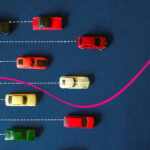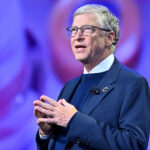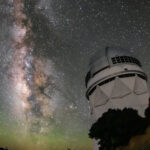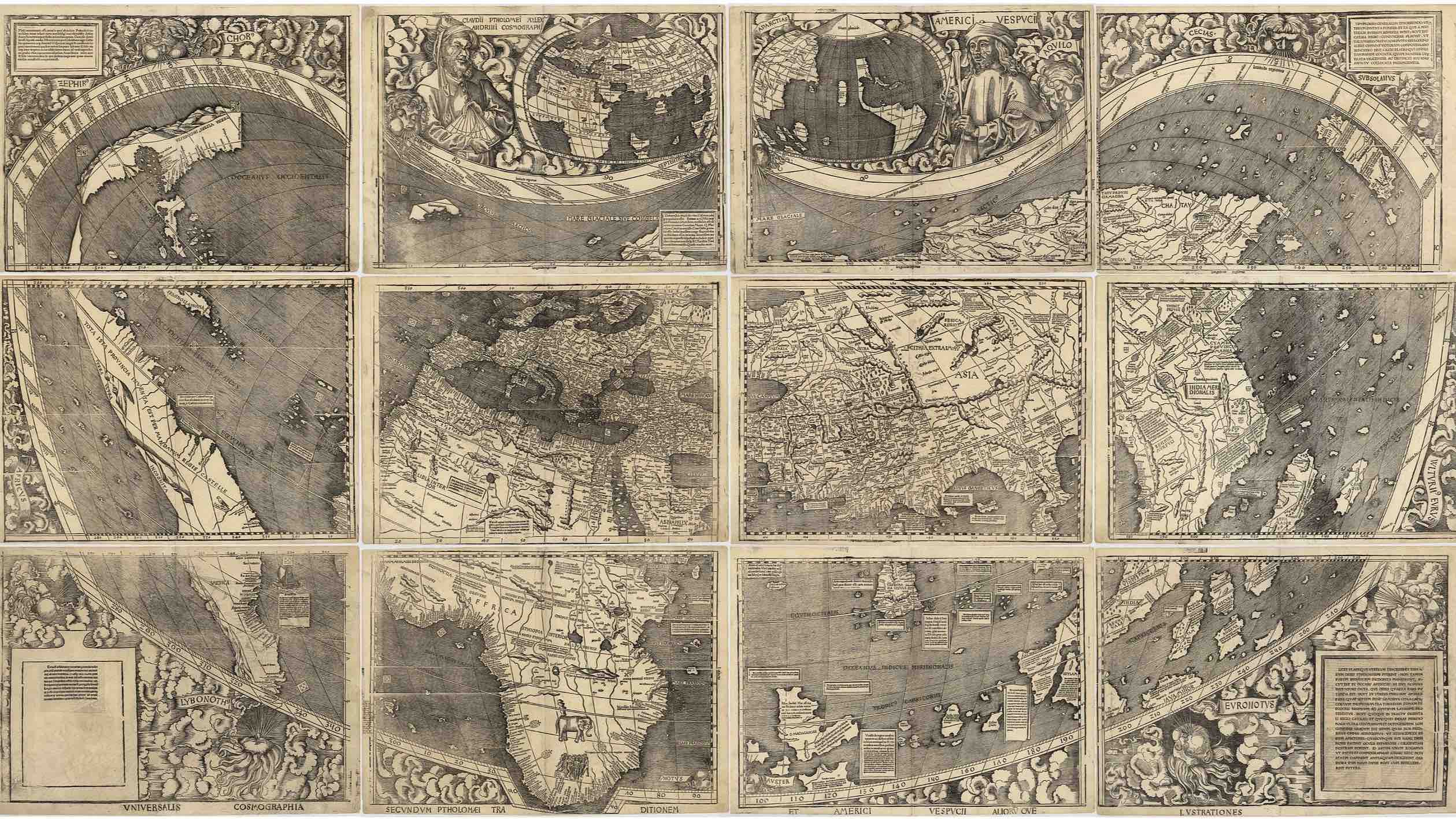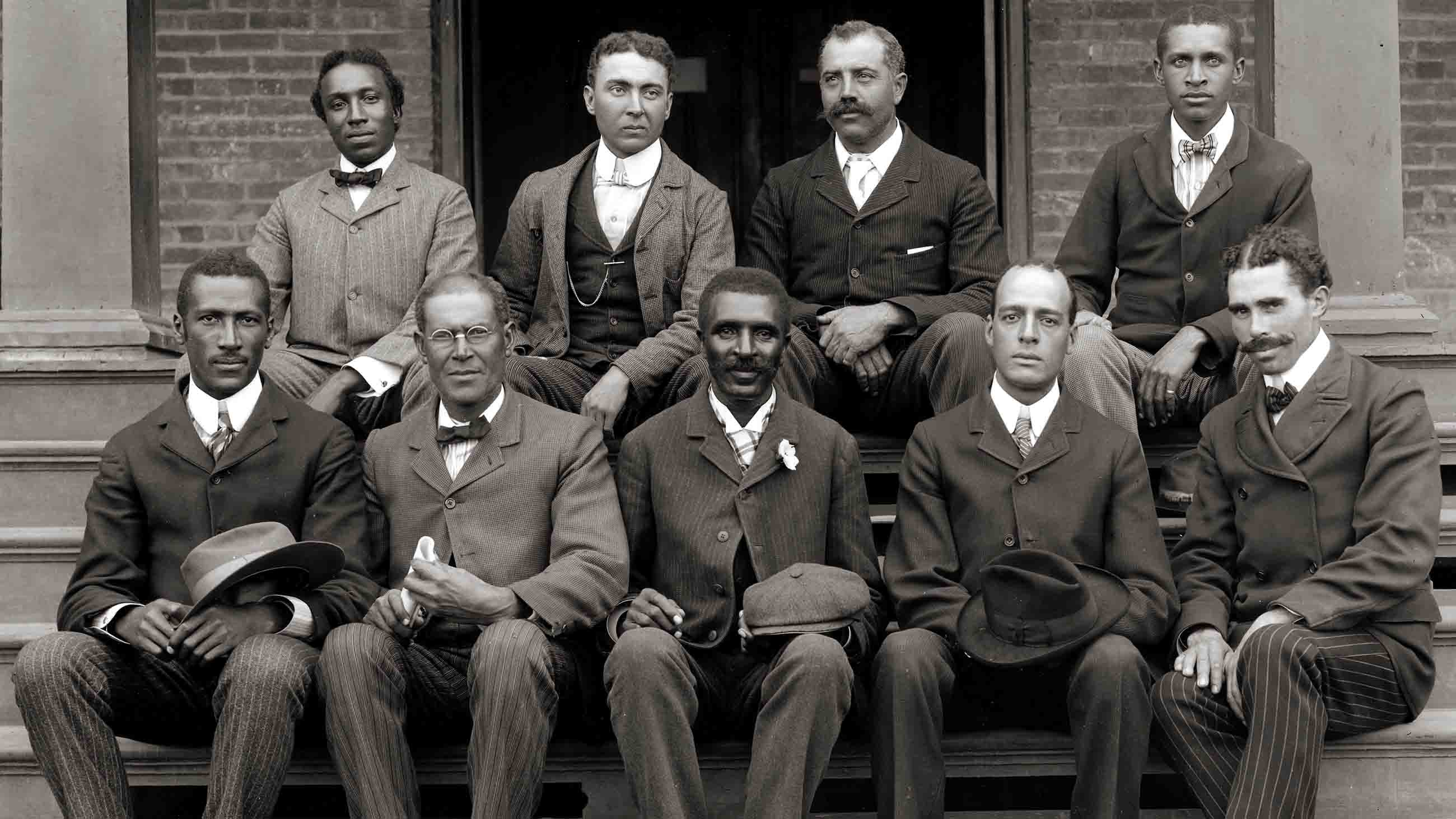Interview: James Poskett on Reframing the History of Science
Think of a famous scientist from the past. What name did you come up with? Very likely, someone from Europe or the United States. That’s hardly surprising, because science is often taught in Western classrooms as though it’s a European-American endeavor.
James Poskett, a historian of science at the University of Warwick in England, believes this myth is not only misleading but dangerous — and it’s something he sets out to correct in his recent book, “Horizons: A Global History of Science.” Billed as “a major retelling of the history of science,” the book frames the last five centuries of the scientific enterprise as a truly globe-spanning project.
In a recent Zoom conversation, Poskett explained why he believes this retelling is needed. The interview has been edited for length and clarity.
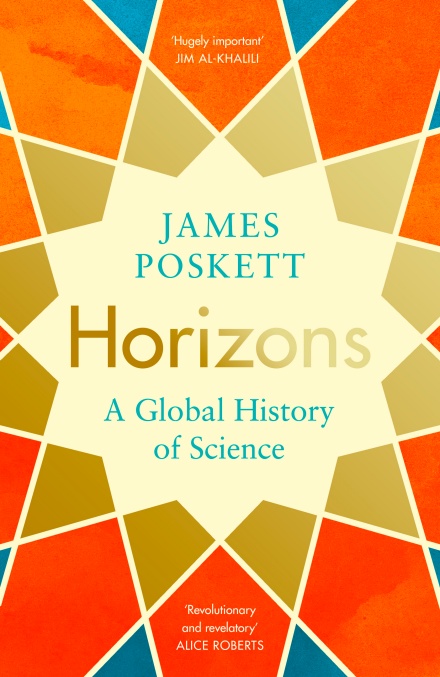
“Horizons: A Global History of Science,” by James Poskett (Penguin Books, 464 Pages).
Visual: Penguin Books
Undark: You point out that the history of science, as it’s usually taught, focuses on figures like Galileo, Newton, Darwin, and Einstein. And I think we can agree that those people did actually make vital contributions. But what’s left out when we focus on those figures?
James Poskett: I agree, it’s really important to emphasize that those figures did make contributions that were significant. So my book isn’t about Newton and Darwin and Einstein not mattering. As you say, those people feature in the book. They’re all significant figures in their own right. But by focusing exclusively on them, we miss two global stories.
The first global story is that these famous figures we’ve heard of in fact relied on their global connections to do much of the work that they’re famous for. Newton is a good example, in terms of him relying on information he was collecting from around the world, often from East India Company officers in Asia, or astronomers on slave-trading ships in the Atlantic. So we miss the global dimension of these famous scientists — not just collecting information, but often actually relying on the culture and knowledge of other peoples too.
The other part is the people from outside of Europe who made their own really significant contributions in their own right. There were Chinese, Japanese, Indian, African astronomers, mathematicians, later evolutionary thinkers, geneticists, chemists, who made genuine important contributions to the development of modern science. It completely skews the story if we have this exclusive focus on White European pioneers.
UD: Another interesting point you make is that when textbooks or popular histories of science do mention the contributions of, say, Islamic science or Chinese science, it’s often framed as a historical episode. The reader gets the impression that this was something that happened in the past. In your book, you say this is not only misleading but it can have harmful consequences. How so?
JP: We’re quite actually familiar with the idea that civilizations in the Middle East and Asia, the Islamic world, Hindu civilizations, Chinese civilization — that these contributed in some way to science. But it’s always told as part of a narrative of an ancient or medieval golden age. And I always tell my students, you should be super suspicious, as soon as you hear the term “golden age,” because it’s massively loaded: It’s telling you that there was once this great achievement, there was this once-great civilization — but the emphasis is on “once,” because the “golden age” bit implies a fall from grace, or a dark age afterwards.
At face value, it sounds good — you know, Islamic mathematicians, chemists, astronomers made important contributions in the 10th century — but actually, that’s kind of pushing those achievements way back in the past. It has the rhetorical effect of saying that Islamic science isn’t modern, or Chinese science, or Hindu science, or Mesoamerican science are not part of modernity; there’s something kind of anti-modern about it.
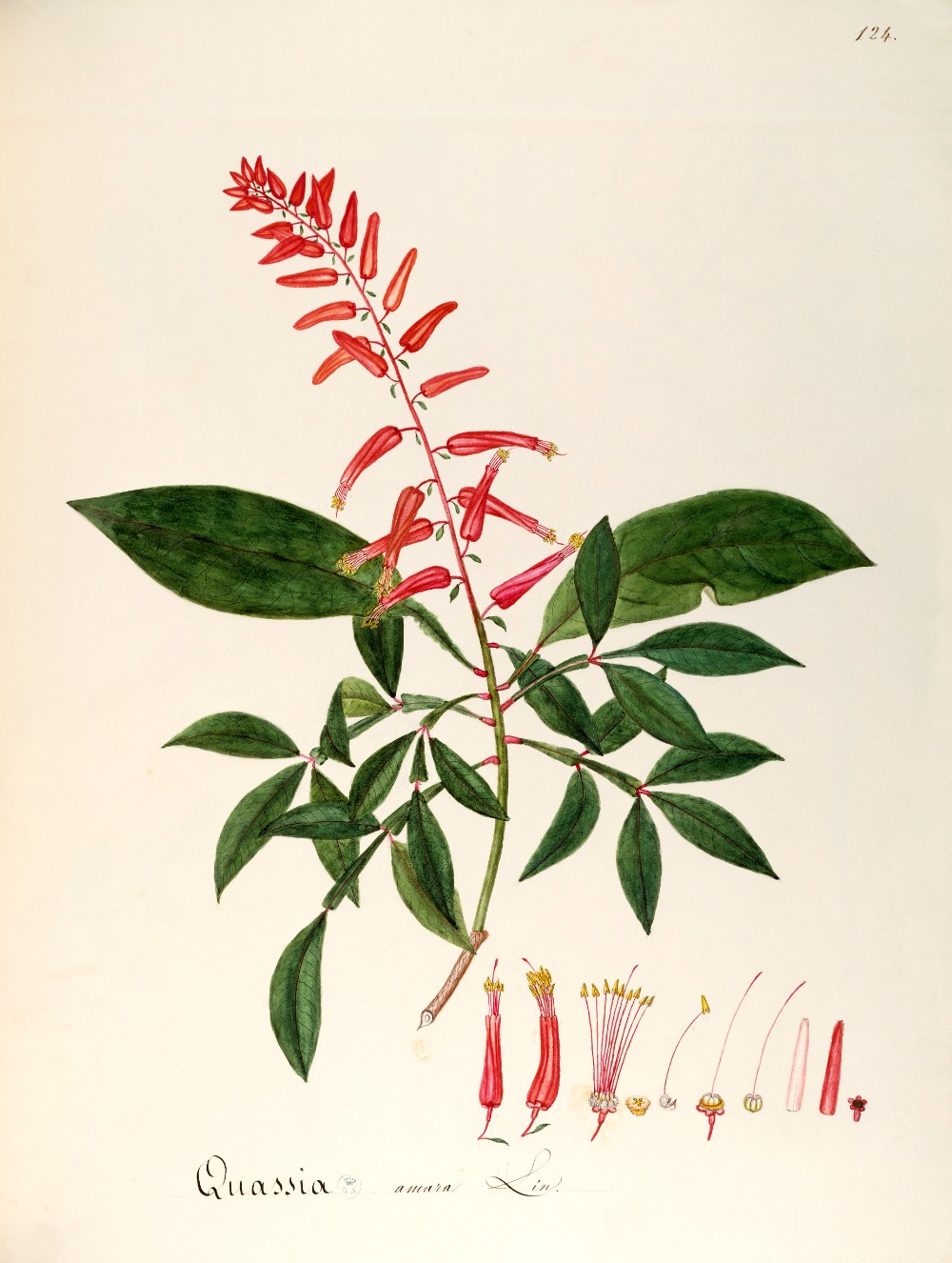
The medicinal plant Quassia amara, also called bitterwood, was first described by Surinamese botanist Graman Quassi in the 1700s.
Visual: Photo By DEA / G. CIGOLINI/De Agostini via Getty Images
Of course, the Islamic world made important contributions to science in the medieval period. But it didn’t suddenly stop. It continued throughout the 15th, 16th, 17th, 18th, 19th, 20th, and 21st centuries. And that’s really the message of the book.
UD: An obvious turning point, not just in the history of science, but in human history writ large, is when Europeans first made contact with the Indigenous peoples of the Americas. In your book, you say that these encounters were critical in terms of thinking of human beings as part of nature. You even write, “The discovery of the New World was also the discovery of humankind.” What do you mean by that?
JP: Broadly, for Europeans, the discovery that there was a “new world” was a major shock to the very foundations of how they thought about knowledge. Knowledge was supposed to be based on ancient texts; it was supposed to be on the authority of ancient Greek and Roman authors, people like Aristotle, or Pliny for geography. And also the Bible was kind of wrapped up with that as well, as a source of ancient authority.
But of course, none of these ancient authors mentioned this enormous continent. And not only was this continent full of life, full of animals and vegetables and plants and minerals that in some cases had not been seen before and weren’t mentioned in the ancient texts — it was full of people!
So this then made thinkers in Europe start saying, well, maybe actually, knowledge isn’t best derived from ancient texts exclusively; maybe we need to go out into the world and look at things to make discoveries. And of course, that’s the metaphor we still use. We talk about scientific “discoveries.”
Humans were seen as separate from the natural world. They were created — in Christian Europe, and most of the major religions at that time — they’re created separately. Humans have a moral element that can be analyzed philosophically and morally, but they’re not meaningfully part of nature in the same way a horse is. But this idea of discovering nature also opened the opportunity that there were things that were to be discovered, not just about the outside world, but about the kind of internal world of the human – that if you could discover a tomato by looking out into the world, maybe you could discover something about humans by looking inside them.
UD: You point out that when we think of the structure of the atom, we tend to think of the New Zealand-born British scientist Ernest Rutherford, who’s often credited with figuring it out. In the book, you talk about an often overlooked figure, Hantaro Nagaoka. Who was he? What was his contribution?
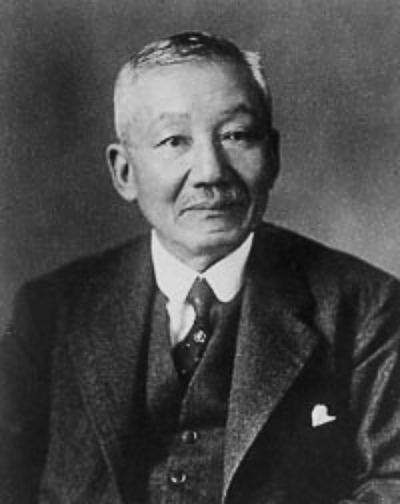
Nineteenth-century Japanese physicist Hantaro Nagaoka was the first scientist to describe the Saturnian structure of the atom in 1904.
Visual: Public Domain
JP: Hantaro Nagaoka was a Japanese physicist. He was born in the mid-19th century. He came from a Samurai family, like many 19th century Japanese scientists, and he was studying physics at a time that Japan was industrializing; where the Samurai were finding a new place for themselves in this modern industrial society. And in the very early 20th century, in 1904, he gave an account of the structure of the atom. He called it the “Saturnian” atom.
He’d worked this out theoretically, rather than by doing experiments. He worked out that, based on complex theoretical assumptions and following these through, that there must be a large, central, positively charged nucleus, surrounded by orbiting electrons. And he called it the Saturnian atom after the planet Saturn, with a big central thing with its rings around it. This is the basic structure of the atom that Rutherford later was famous for developing, for doing the experimental work for — but Rutherford published his paper seven years later, in 1911.
And in fact Rutherford would have acknowledged this. Rutherford cites Nagaoka’s paper at the end of his famous 1911 paper. And Rutherford actually corresponded with Nagaoka. Nagaoka wasn’t some unknown scientist nobody had ever heard of. He was attending conferences in Paris; he came to Britain and actually had a tour of Rutherford’s laboratory in Manchester, where Rutherford did the experiments. And actually, if you look at textbooks from the early 20th century, they mention Nagaoka — he’s kind of just fallen out of the history later on.
So he made this really serious contribution to atomic physics. But he’s one of the smoking gun examples of someone who really came up with a key theoretical piece of science, that was a major influence in the 20th century, but is almost completely forgotten outside of Japan.
My point isn’t that Rutherford stole the idea. My point is that science is made through these processes of global cultural exchange, through these different people making different contributions.
UD: Turning to the present day: You describe the current relationship between the U.S. and China as being like a new Cold War. How does science fit in to this new “war”?
JP: Science fits into it in some ways like the original Cold War, in that science has a practical function. And that’s clearly how states like China, like the United States, like India, the United Arab Emirates —they see it as part of their economic strategy. Basically, that investment in sciences like artificial intelligence will allow a transformation of the economy, increased production — and this is really important for keeping citizens happy, and ultimately having the kind of economic clout to dominate the world economically and politically and through soft power.
Also, in more practical terms, space science has a really clear military element with respect to satellites, rocketry. I talk a lot about climate science being a science that fits with the new Cold War, in that it’s seen by states as a kind of security problem. For China, climate science is important to invest in because their coastal regions are major economic centers. They don’t want those going underwater.
So there are practical elements — but it’s also ideological. We’re seeing a return of a kind of nationalism — this weird combination of globalization and nationalism. Xi Jinping is a nationalist, much more so than some of the previous Chinese leaders. He’s just the most prominent example, and probably the person that’s most likely be able to to walk the walk as well as talk the talk. But nationalist leaders in India, in Turkey, in the UAE, in America, in Britain. Boris Johnson talked about making Britain a new “scientific superpower.” So science also becomes an ideological marker of national prestige.
UD: Throughout the book you sort of argue that it’s wrong to frame the history of science as a European endeavor or an Anglo-American endeavor. Why do you feel it’s so important to rewrite or update that framing?
JP: For overlapping reasons. A basic one is about representation and diversity in science; equity. Science, in Europe and Britain, certainly in America — United States and North America generally — is not equitable, particularly in terms of diversity with respect to minority ethnic groups, but other kinds of diversity as well, in terms of class and gender, disability, and the like.
So I think if the scientific profession is disproportionately people like me — White men who went to Cambridge — then part, but not the exclusive reason for that, is because we repeatedly present to the public, to school children, to university students, an image of the sciences which looks like me. It’s people like Newton or Einstein or Darwin — they’re these White men. And again, my point isn’t that they’re not part of the story. Absolutely they are. But that there are other people from around the world, from different cultural backgrounds, who are part of it.
We’re at a kind of crossroads in history, but also in science. And the narratives that scientists were taught and told themselves in the West was a narrative that was built for the Cold War. But the Cold War’s over — the original one. Yet we’re still telling these narratives about Western science, science being neutral. And I think a lot of public mistrust in the sciences generally is actually a function of this — that we need to present publicly a more realistic, political, diverse account of how science is done – how we got to now — in order to have the consent and engagement of the mass public in the sciences.
I really think that this kind of history of science shouldn’t be seen as a threat to scientists. I’m not doing it because I want to see the end of science, and for all of us become vaccine deniers. I’m doing it for the opposite reason: I think if you want to stem the tide of vaccine and climate denial, and xenophobic nationalism, then you need a history of science which really engages with these quite difficult histories.



